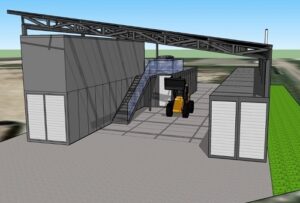Waste2oil can turn waste plastics, used tyres, and used face masks into high-quality oil that has a similar structure to diesel!
 The current pandemic has made waste more visible than ever. Not only used face masks and gloves but also plastics and used tyres are found on beaches, in the sea, around sidewalks, roads, playgrounds and have an adverse impact on the environment and human health. People can be infected by direct contact with contaminated waste or indirectly through contaminated soil, surface water, air, or diseased animals. Waste2oil technology is turning this kind of waste into high-quality oil.
The current pandemic has made waste more visible than ever. Not only used face masks and gloves but also plastics and used tyres are found on beaches, in the sea, around sidewalks, roads, playgrounds and have an adverse impact on the environment and human health. People can be infected by direct contact with contaminated waste or indirectly through contaminated soil, surface water, air, or diseased animals. Waste2oil technology is turning this kind of waste into high-quality oil.
Most plastic waste, used tyres, and used face masks end up in landfills or illegally discarded, degrading nature’s natural beauty and quality. Waste2oil technology is designed to turn such waste into high-quality oil. It presents an eco-friendly and economical solution that has CE Certification that converts this kind of waste into high-quality oil without producing any emissions. The whole technology fits into 4 containers which can be assembled on-site in 2 days. Waste2oil units can recycle 18 – 24 tons of waste every day.
The difference between common technologies and Waste2oil technology is that in common technologies waste is loaded into the device, heated to a high temperature, cooled, and cleaned and the whole process is repeated, which is very energy-intensive and therefore less economical. Waste2oil technology works in a continuous process, where a screw conveyor moves the waste through the equipment, which is heated continuously, reducing the need for heating and cooling cycles, which has a positive effect on the technology lifespan and it’s easy for the staff to operate. With Waste2oil technology, only 3 people per shift are needed to operate the recycling unit.
Conventional recycling technologies for producing oil from plastics and used tyres yield oil that must be further purified and treated in order to be a fuel or feedstock for plastic production. An important advantage of Waste2oil technology is the resulting oil quality. Laboratory tests of oil made in London show that oil has a similar structure to diesel.
After the recycling process, we get oil, gas, and carbon black. Oil can be used to generate electricity using diesel generators. From 1 ton of waste, we can produce up to 3 MW of electricity. Oil can also be used for transportation as a fuel for ships, trucks, buses, and older diesel engines without direct fuel injection and in the petrochemical industry where can be used to make new plastics. Gas can be used to power gas turbines to produce power for the Waste2oil unit. The unit is then self-sufficient and can be placed anywhere, including remote areas such as islands, only a paved surface is required.
Waste2oil technology has been developed as a technology without pollution with very low operating costs. It has been designed to work for 20 years. Return of investment depends on many aspects, such as the government‘s support for the disposal of plastics, used tires, hospital waste, the local price of electricity, price of diesel for generators, ships, trucks, buses, etc. Despite this, Waste2oil technology has an estimated return of investment from 2 to 7 years.
Our children deserve to live in a clean environment as we remember from our childhood. Waste2oil technology can help to make it happen.